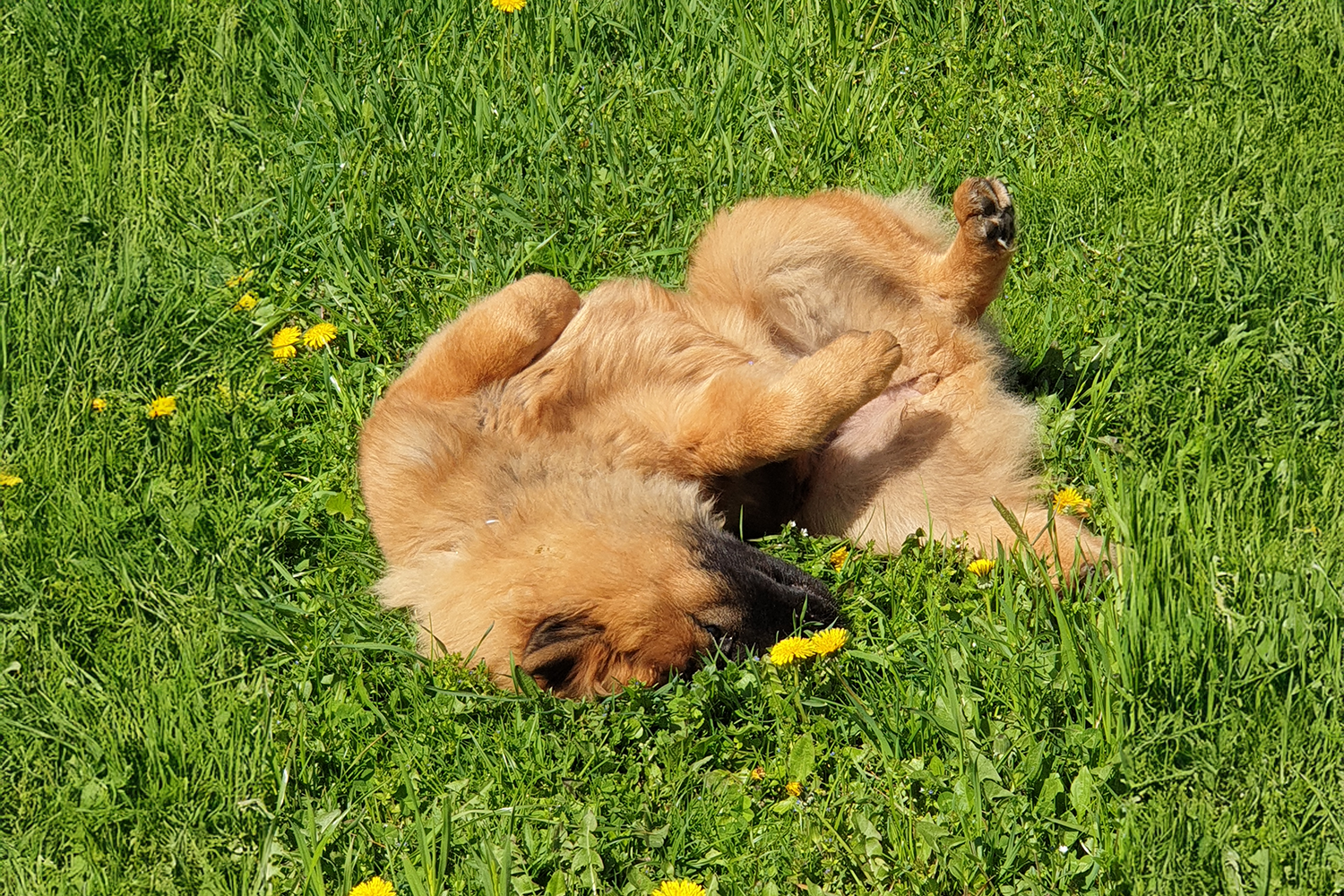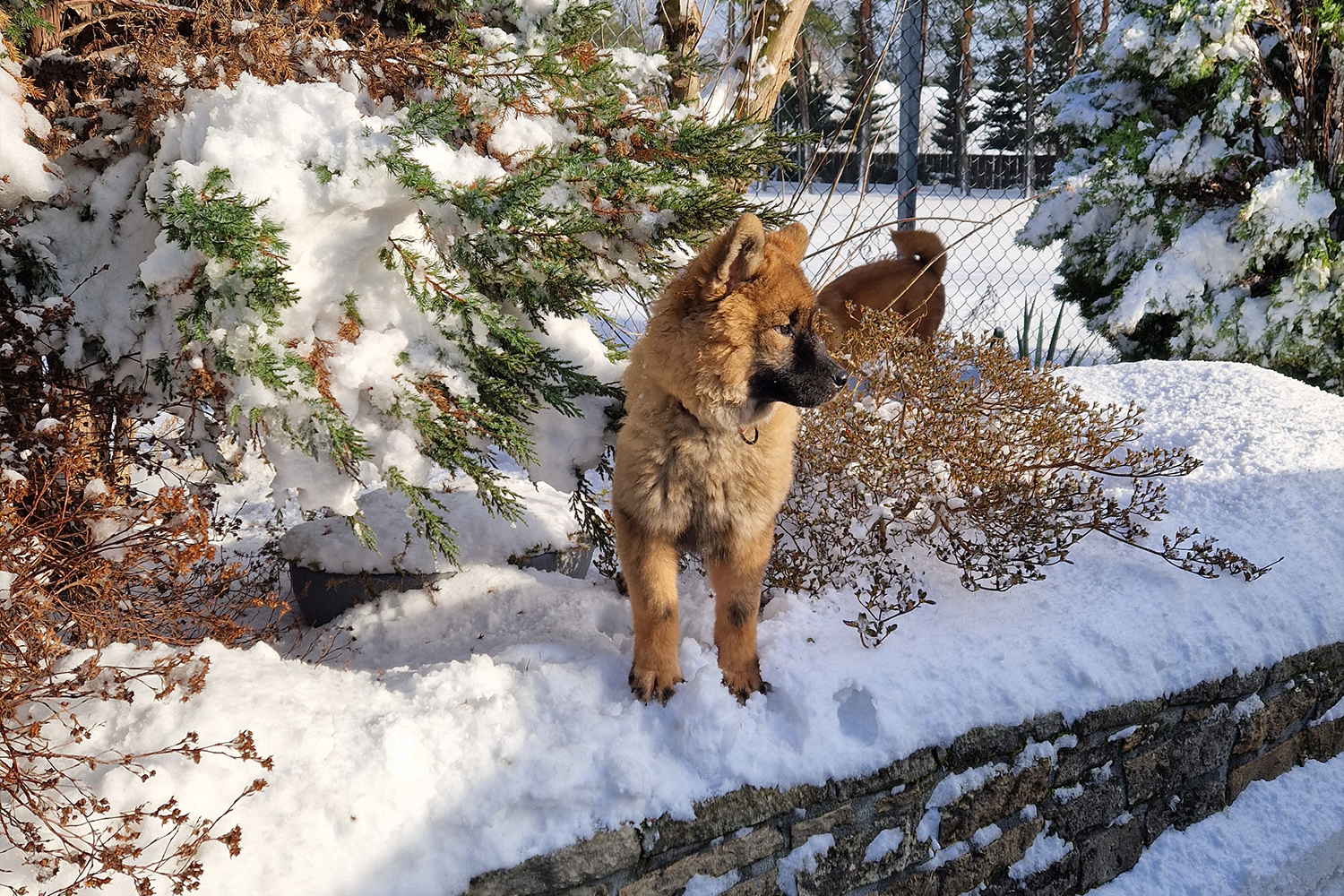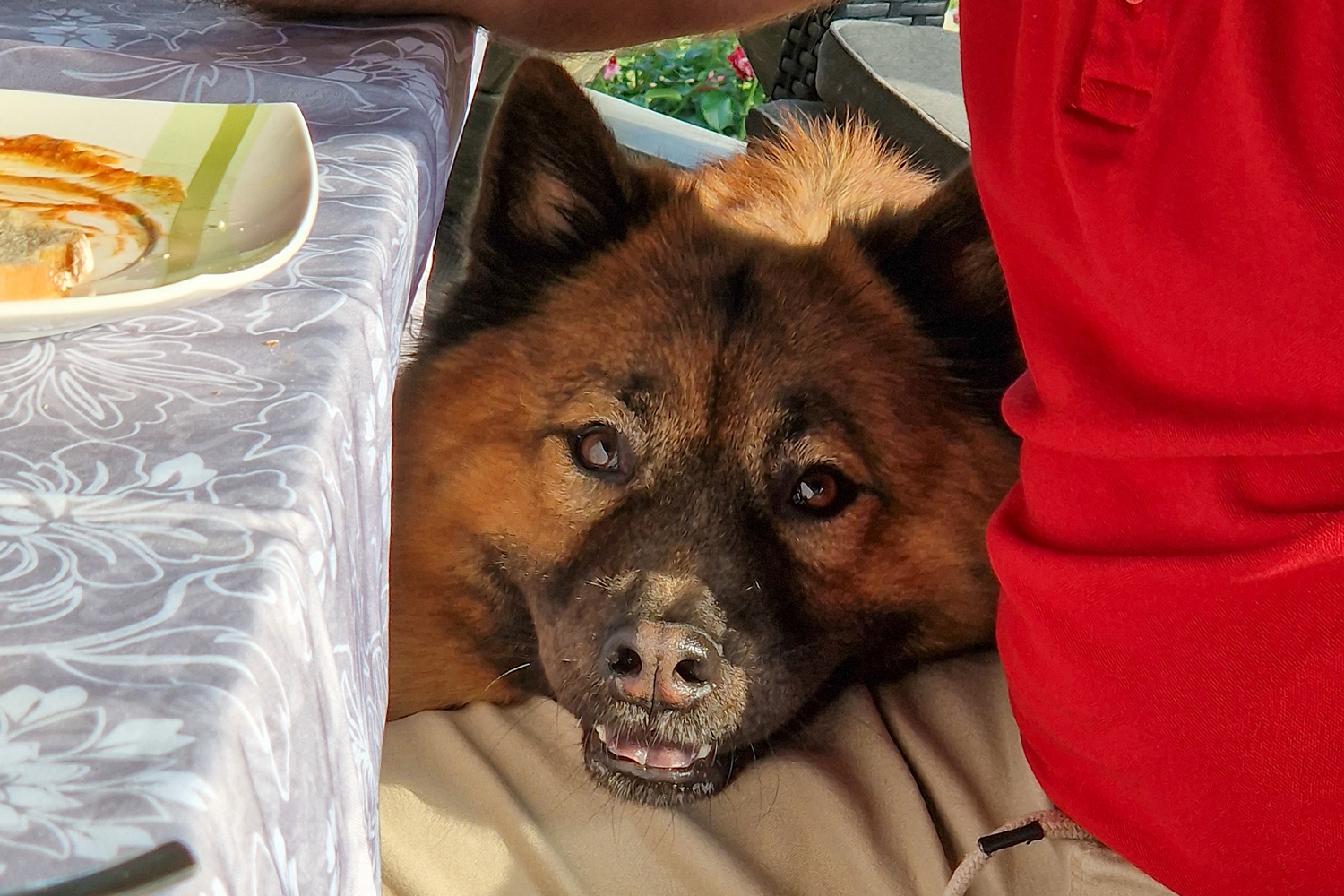
The breed originated in Germany during the 1960s. The creator is Julius Wipfel. Initially, the breeding plan was based on crossing wolf spitz females with chow chow males, but later Samoyed genes were added. It was registered with the FCI in 1973. Julius's goal was to create the ideal family dog that would also be alert to strangers.
In Poland, the first Eurasiers appeared in the 1980s at the RO-KA-TE kennel, managed by Ms. Katarzyna Szczepanek. In the following years, breeding declined due to a small gene pool and lack of interest in this rare breed. It was not until 2009 that the Lupus Ferratus kennel brought the female Freya Tomimopa to Poland, from which began the beautiful story of Eurasiers in Poland.
FCI BREED STANDARDThe Eurasier breed is decidedly unique and exceptionally interesting. It originated from a cross between the Chow Chow, Keeshond, and Samoyed. Despite being spitz, they rarely bark. They usually bark when they feel threatened, such as when a stranger enters the home, something moves in the bushes, or it is dark, and they will bark softly to signal that there is a fierce dog on the property and it is better not to approach (this is always just a warning, in confrontations they generally choose to flee or maintain distance).
By nature, the breed does not display aggression and is completely unsuitable as a guard dog. They are very sensitive dogs that need to know everything that is happening around them, but they are not impulsive. Eurasiers are dogs that adapt perfectly to the environments they inhabit; they can adjust to their owner and their lifestyle.

Maintaining the right amount of exercise and human contact, they feel perfectly at home both indoors and in the garden, as well as in apartments. From our experience, Dobrusia adapted very well to situations when we could provide a lot of activities and various attractions, and also when we had to limit playtime and she had enough with just being with us and running around in the garden.
When it comes to training Eurasiers, they are very intelligent dogs and teaching Dobrusia new commands was really a pleasure. We strongly encourage training but advise against harsh methods because they can lead to the opposite effect and the dog may not want to cooperate. It’s important to be consistent and patient, but not harsh, as like our Dobrusia, a Eurasier can use its intelligence to slightly deceive and manipulate to achieve its goals, such as stealing something from the table. They respond best to positive reinforcement, tailored individually to the dog, for example, Dobrusia would perform commands perfectly on walks when treats were involved as they are great motivation.

Another advantage of Eurasiers is that, as a medium-sized breed, they generally live quite long, typically 12-15 years, and are also healthy. There is often information suggesting that Eurasiers lack a hunting instinct, but from our experience with Dobrusia, we know this isn’t the case. The hunting instinct is there and must be considered. For instance, as soon as she sees a squirrel in a tree, she can spend the whole day underneath it waiting for it to come down. Similarly with a cat. In the forest, as soon as she spots deer, she wants to chase them and quickly picks up the trail. Thus, we can openly say that our Dobrusia does possess a hunting instinct. Discussions with other owners suggest that this is quite common, so perhaps the hunting instinct in Eurasiers is weak, but it definitely exists.
When it comes to their approach to strangers, Eurasiers are quite distant. For them, what matters most is their family, and only their closest family members. From our experience, we can say that Dobrusia needs to be where we are; she is happiest then, even if we are occupied with something else, just our presence is enough for her.
Dogs of this breed can definitely not be called intrusive. They are very loyal to their family, whom they dearly love, yet due to their introverted nature, they do not handle prolonged solitude well. It’s safe to say they are the ideal breed for people like us who value quiet and peace but also close family bonds. When it comes to interacting with strangers, Eurasiers are quite reserved. For them, the most important thing is their immediate family, only that closest circle. From our experience, we can say that Dobrusia needs to be where we are; she is happiest then, even if we are busy with something else, just our presence is enough for her.
Eurasiers feature a slightly smiling expression, which is very characteristic and always seems to cheer people up and calm them down after a tough day (looking at such a face can relieve stress and soothe a person). Eurasiers are somewhat like chameleons over their lifetime; the color of their coat can change (most often in early age). Sometimes the fur is lighter or darker, so it’s hard to predict what the final color will be, making each life stage look unique. Additionally, their appearance somewhat resembles sled dogs (which is a nod to their Nordic inspiration, hence the name of the kennel) but they do not have the natural need for continuous running. Compared to the Samoyed, for example, they are decidedly more relaxed and quieter.
Methods: BARF, wet food, dry food
Recommended brands of dry food: Baltica (which we use at the kennel), Empire, Eden, Brit, Acana, Orijen, Real Nature Wilderness, Wolf of Wilderness, Perro.
Recommended brands of wet food: Baltica, Perro, Syta Micha, Zoya Pokusa, Carnilove, Brit.
When picking up a puppy from the kennel, it's best to continue feeding the same food they received at the kennel, unless there are issues requiring a change. The change should be gradual by mixing the old with the new food: 1-2 days 25% new and 75% old, 3-4 days 50% new and 50% old, 5-6 days 75% new and 25% old, and on the 7th day 100% new food. Watch for any signs of diarrhea/constipation/vomiting/lack of appetite.
Change from "puppy" to "junior" food around 4 months, then to "adult" after 12 months of age (also gradual). Do not mix dry and wet food together; it's best to serve them separately, e.g., wet in the morning and dry in the evening. Walk your dog 30-60 minutes after eating, and avoid feeding right after exercise to reduce the risk of stomach twist. You can give treats for training but do so sparingly and not excessively.
Supplements: rockrose (anti-ticks), egg yolk, salmon oil, supplements necessary for the puppy’s development.

Eurasiers shed twice a year - once in the spring and at the beginning of winter.
Grooming tools: Poodle brush, e.g., Show Tech, rotating pin brush, metal comb.
Absolutely do not use a furminator; it can damage the fur.
Eurasiers are relatively easy to groom because usually brushing them 2-3 times a week is sufficient, with more frequent brushing when shedding.
Do not shave or trim the dogs - when it gets too warm they will shed their undercoat.
The fur has self-cleaning properties, meaning after getting dirty it can be cleaned by simply brushing out the dirt once dry.
Bathing 1-2 times a year is usually enough (done by themselves or by a professional groomer).
Nail clipping - if walking on rough surfaces doesn’t naturally wear down the nails, they may need to be trimmed with special clippers with a stop to prevent over-cutting.
Teeth cleaning - we use toothbrushes with soft bristles along with enzymatic toothpaste; you can also give natural chew toys that help scrape off tartar.

In the process of acclimatizing a Eurasier to a kennel crate, about 110x70 cm in size, it is crucial to gradually introduce the dog to the new space. The crate should not be used as a place of punishment, but as a space where the dog can feel safe and comfortable. Encouraging the dog with treats, toys, and praise will help it form positive associations with the crate. It's also worthwhile to gradually increase the time the dog spends in the crate, starting with short sessions. Meals can also be given inside, which further strengthens positive associations. Once the Eurasier begins to feel at ease in the crate, you can try closing the door. Since Eurasiers value close and secure spaces, such an area can prove ideal for them, providing a sense of security and peace.
Collar, preferably half-choke.
Harness only for the car, or if the dog pulls strongly on the collar.
Training line about 10 meters for walks (e.g., made of biothane).
City leash about 3 meters for visits to the vet or in public places.
Deworming up to 6 months of age every month or two, after 6 months every 3 months.
Tick prevention tablet throughout the year (e.g., Simparica, Bravecto, NexGard) or drops.
Possible supplements for joints/egg yolk for better fur.